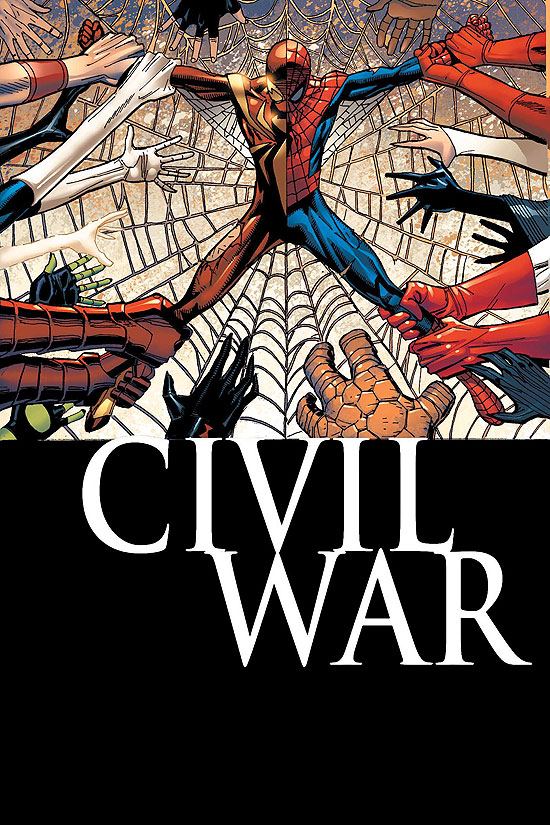
Anyone who tells you they saw the first IRON MAN in 2008 and predicted the global juggernaut that’s known today by the initials “MCU” is lying. The post-credits Easter egg was barely seen by the untrained masses who hadn’t yet learned to stick around for it,* and it felt less like a declaration of intent than a bargaining chip for potential fans of the fledgling Marvel Studios. Look, guys, we’re going to try to start making these things ourselves, so if you keep watching them, we’ll try to do some things you’ve never seen before. Hindsight being what it is, an inauspicious beginning looks almost naive today; even the first AVENGERS, which was the first onscreen representation of an all-out shared universe, plays like a TV movie compared to this year’s ENDGAME. This isn’t a bad thing — the development was a legitimate process, rather than the desperate, high-speed Kitchen Sink approach attempted by Warner Brothers in their bid to copy the formula for DC Comics. To call it a failure would be an understatement in the extreme.
Even so, the Marvel films felt curiously incomplete, until you stopped and realized it wasn’t curious after all. If there’s something for which Kevin Feige should be most commended, it’s in making C-listers like the Guardians of the Galaxy become BELOVED CHARACTERS (all in caps, like a war memorial). Even the Big Three — Iron Man, Thor, and Captain America — were more important in the fictional Marvel Universe than in Pop Culture, where the three rolled together still barely touched the overall awareness of a character like The Hulk, who managed to bomb in his first two cinematic outings regardless. Feige guided someone like Black Panther, who’s always been a Barely There figure on the page, into a figure of representation; he gave ladies of all ages an identifying model in the form of Captain Marvel.** For decades, Marvel has been a universe inhabited by an overwhelming roster of heroes, but the niche appeal relegated all but a very small handful to the dusty dollar bin of your local comic shop. The films might be praised as successful in presenting that limitless, interconnected universe with reasonable fidelity; the greater success has been in the seemingly effortless way in which no-name characters have now come to inhabit our universal consciousness.
Be that as it may, it all still felt like it was missing something. Marvel Studios had to work with what it had to work with, and what it had to work with wasn’t the roster of heroes they’re best known for. Both the Fantastic Four and the X-Men were under the questionable (but in the latter case, lucrative) guidance of Fox; and Spider-Man, who’s all but the company mascot, still resided at Sony, where he’d gone from Cash Cow to Mad Cow Disease. The fact that these leotard-wearing heroes weren’t present felt somehow incomprehensible. The fact that they weren’t present because they were being wasted felt maddening.
Thank Kim-Jong-Un and the famous Sony hacks for busting Spidey out of his cage. The execs at Columbia Pictures, under the leadership of Amy Pascal, were trying to deal with the fact that they’d made a Spider-Man movie — one in which the villain wore biker shorts and a pager on his head — that people inexplicably didn’t want to see. THE AMAZING SPIDER-MAN 2’s attempt to create a shared universe out of one hero and all of his villains was like watching a bed filling with messy, newborn baby shit in horrible slow motion. Somehow, the ongoing news updates made it worse: the colon was purging itself in violent spasms, as each new project was announced, cancelled, and then replaced by something even more wet, sticky, and — let’s just stop with the metaphor and call a spade a spade, here — shitty. Did you want to see a film about young Aunt May, super spy? Neither did anyone else. Next.
Kim-Jong-Un wasn’t thrilled about Sony’s output, either. THE INTERVIEW — starring no less than Harry Osborn_v1 — was something he took personally. It might have sounded like some crazy sci-fi concept about five years ago, but today, the notion of bringing down a corporate entity by infiltrating their email server is horrifyingly real. All sorts of plans, deals, and backstabbing was made suddenly public, placing a lot of people in a very vulnerable place, and ready to make nice in whatever way was going to save their collective asses. That’s where Spidey swings in to save the day, because that’s what he does: he rescues his captors, even when they’ve imprisoned him with a Sally Field whose shock of black hair makes her look like some sort of geriatric monster living in a gingerbread house.***
The upshot is that Marvel Studios gained the Spider-Rights and wasted no time in including him in the next appropriate epic, CAPTAIN AMERICA: CIVIL WAR, which is essentially the story of people in spandex arguing over gun control. There were five horrible minutes when it sounded like Sony was willing to play ball if Feige took the current Andrew Garfield incarnation of the character; for reasons that have been disputed (and may or may not involve He of the Biggest Hair snubbing some powerful executives because he wanted to take the day off from schmoozing), Marvel had the opportunity to perform a complete rehabilitation, using their own high standards for adapting four-color crimefighters into something it was no longer embarrassing to say you liked. The super-powered crimefighters of the Marvel Universe were Marvel creations, reinterpreted for the big screen by the very people who best understood them. Spider-Man was to be no exception to this rule.
But it has to be stressed that Marvel wasn’t “getting Spidey back” so much as he was on loan. This meant a finite series of appearances in films overseen by Kevin Feige, but were — at least in terms of the solo outings — still Sony products. Depending on how things turned out, they’d all come back to the table six movies down the line to talk, re-evaluate, and try to bleed the other for all it was worth.
That last point remained — and remains — the most important. Pascal and her cadre of producers didn’t know what to do with Spider-Man at this point, and were more than happy to let him experience reinvention at the hands of arguably the most successful creators in film history. However, Spidey was, as stated, on loan. That meant, and still means, that the same people responsible for SHITTY SPIDER-MAN and it’s 2014 sequel, SHITTIER SPIDER-MAN, retained the power to seize control again somewhere down the line, and produce EVEN SHITTIER SPIDER-MAN.**** Were Feige et al. to do something genuinely fun and original in their take, they might lose control to the same people who decided to have Uncle Ben meet his fate because of a bottle of chocolate milk. We’re talking SPIDER-MAN 3, essentially: the ruination of a successful franchise by way of hapless, commercial-minded Marching Orders.
The first part happened, as expected. You can say what you want about Tom Holland’s Spider-Take, and whether the young hero’s introduction to a new world of Gods and Monsters is the correct one. We’ll get there, and soon. Regardless of what a bunch of online nerds might think, Marvel spoke, and the world responded with their wallets. CAPTAIN AMERICA; CIVIL WAR might have been, on paper, the same movie as BATMAN V SUPERMAN: YAWN OF JUSTICE,***** and the Spider-Man contained might have also been, on paper, the same kid as the last one; audiences disagreed with the finer points of either argument. The reception to the following year’s SPIDER-MAN: HOMECOMING, in which the protagonist had to carry his own story without (much) cameo-laden help further underlined this point, as did the fact that in both times I saw ENDGAME theatrically, Spidey received the loudest applause during the Splash Page reappearance of The Snapped.
CIVIL WAR established a Peter Parker who isn’t just an inhabitant of the world populated by Avengers, Guardians, and underwhelming IRON MAN sequels; he is in part a product of that world. There’s only an oblique reference to Uncle Ben, or power and responsibility, and the latter bit is delivered far less clumsily than the speech previously spit-delivered by Martin Sheen.***** This Peter is as much created by Tony Stark as his decision to let a gunman run past without bothering to intervene, and then paying for it. For the first time, a teenager’s acquisition of a costume that likely needs three people to help put on, is explained within the narrative — but it’s simply one more decision that forever links Tom Holland-Man to the MCU with no hope of disentanglement.****** This could be seen as a calculated move on Marvel’s part: Audiences are going to fall with in love with our version of the kid, inhabiting our specific universe; and you can’t have our version work the same way without us, and all these characters.
Ah, but it’s a double-edged sword. Almost right from the jump, Sony began threatening us with the same Spiderverse it had previously discussed, and one that would 1) give the MCU iteration a home once his deal with Marvel Studios expired, and 2) prohibited the use of villains and antiheroes by Feige and his team of creatives. There was no mention of that Aunt May movie, thank Christ, but plenty of announcements spun around Black Cat, Silver Sable, Kraven the Hunter, and, of course, Venom. Sony just has to have Venom, and eventually, they followed up on their promise with a movie about a dark version of a hero who is never once referenced. To put it in layman’s terms, a Venom movie without Spider-Man is like shit without toilet paper. Apologies for all the analogies involving the brown stuff, but no, I’m not sorry, so strike that from the record, please.
What this creates is two possible scenarios. In the first, Sony and Marvel agree that the current course of action is the best one, and continue along with the present take on Spider-Man until Holland gets bored with the role, and HOMECOMING’s backdoor setup of Miles Morales can be initiated. In the second, Sony decides to act like stupid, thieving magpies and take what Marvel’s done, and greedily hoard it. Not only is Spider-Man folded into their cinematic universe of Eddie Brock and Michael Morbius, but they create an incongruousuniverse. Both co-exist, but never the twain shall meet. For everyone always asking why Iron Man doesn’t show up to help Captain America during threats to the human race or whatever, this would be much harder to answer.
In true Chicken & Egg fashion, both studios seem to have built insurance policies into their shared property, suspiciously right around the time when terms require renegotiation. Sony had an unexpected hit with INTO THE SPIDERVERSE, which sounds like a good thing until you realize it — and VENOM’s relative success — gives them reason to feel emboldened. FAR FROM HOME is likewise teasing the concept of parallel universes in its trailers and TV spots, and to be honest, it’s straight from the comic book source, so it’s not like it’s being made up out of thin air. You don’t have to be Madame Web to see what’s going on, though.
INTO THE SPIDERVERSE establishes a series of interconnected realities in which kinda-sorta twin versions of yourself and everyone you know live out lives that are different, but the same. With that idea now introduced outside of live-action canon, audiences are prepped for a move in which the cast of the MCU simply hop on over to Columbia Pictures full time, playing the same roles while now rubbing shoulders with new, and very terrible villains. It’s a way to have their cake, fuck it, and make you eat it, too.
The Marvel plan is almost identical, but rather than an offensive maneuver, it’s like a Get Out of Dodge Free card. I have yet to see FAR FROM HOME (though you can guarantee my write-up will appear on Tuesday), but the implications are clear. Mysterio claims to be a refugee from an alternate reality, and if one can cross over into the 616 Marvel Universe, then one can also cross over into the Number Two Diaperworld of Sony. Feige and his team can shrug, consider themselves thankful that they had the opportunity to include Spider-Man in their historic run, and sit back comfortably as they wait for their previous uneasy alliance to re-establish out of necessity. Speaking of which, if anyone has North Korea’s phone number, let me know.
The period leading up to CAPTAIN AMERICA: CIVIL WAR’s release was one of intense speculation. No just three years later, the Spider-Wheel has turned, and quickly. There were many who complained that Peter was shoehorned into a movie that didn’t need him, and while I see their point, they’re wrong, so there.******* It was an introduction that was an homage to the Iron Man/Spidey relationship in the CIVIL WAR comics event, and the youthful enthusiasm of Tom Holland’s portrayal added a completely new dynamic in a story about middle-aged people punching one another in the face. True, it was a story that didn’t need him, but one that benefitted by way of his inclusion. I think that’s really the best way to summarize the presence of an MCU Spider-Man, and why sometimes, even facist dictators can unwittingly bring a smile to a kid’s face.
*It’s 2019, guys. The fact that there are still people who don’t know about these things means the rest of us have to sit there and listen to them loudly masticating on pizza and nachos and buckets of chicken, asking HEY WHO’S THAT at a conversational volume before going on Instagram to look at their friends’ pictures of dinner.
**And then after poising her as heavy artillery in the subsequent ENDGAME, completely wasted her.
***THE AMAZING SPIDER-MAN is a film that’s unbelievably bizarre in almost every decision, but if there’s one legitimately funny scene, it’s where Aunt May — who’s given a nursing school subplot here, likely at the insistence of Sally Field — is at the hospital during the climactic power outage, and immediately takes over command of the place. It’s a big step up from emptying colostomy bags.
****As well as its follow-up, SHITTIEST SPIDER-MAN.
*****If Kevin Feige wants to stroke my inner Geek, FAR FROM HOME will feature a framed picture of an Uncle Ben, played by Tobey Maguire, circa 2019.
******As the father of a child on the autism spectrum, Peter’s comment that his goggles help him with sensory overload was a wonderfully understated but immediately insightful touch that still resonates. Spider-Man continues to teach me things I can find application for, even in my adult life.
*******Because I enjoy writing footnotes, I’d like to take this opportunity to point out something I’ve never accomplished as a writer, and that’s the chance to use their, they’re, and there all in one sentence. Thanks, Spider-Man!
Erik Kristopher Myers (aka ekm)
@ekmyers
https://www.facebook.com/ekmyers

